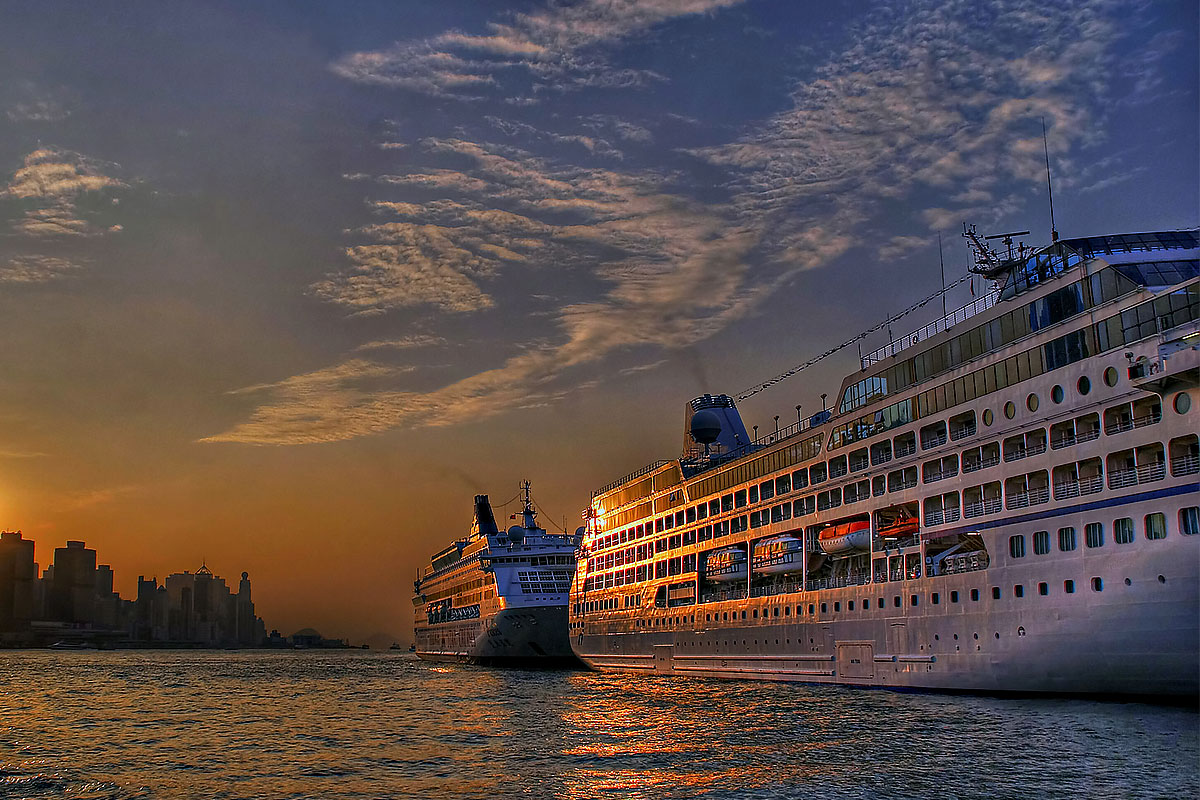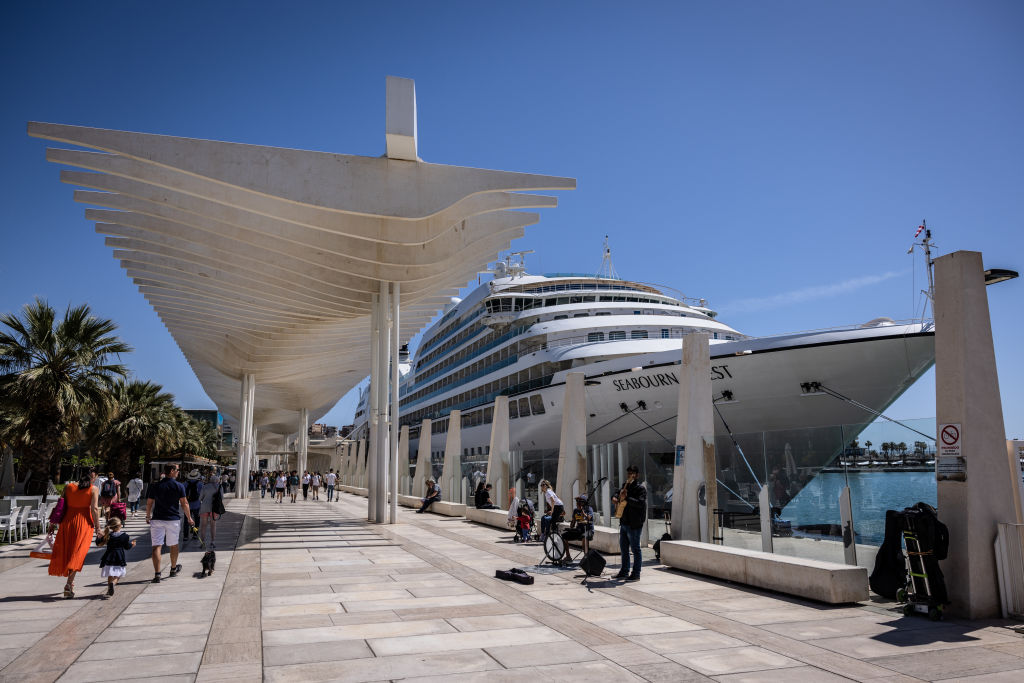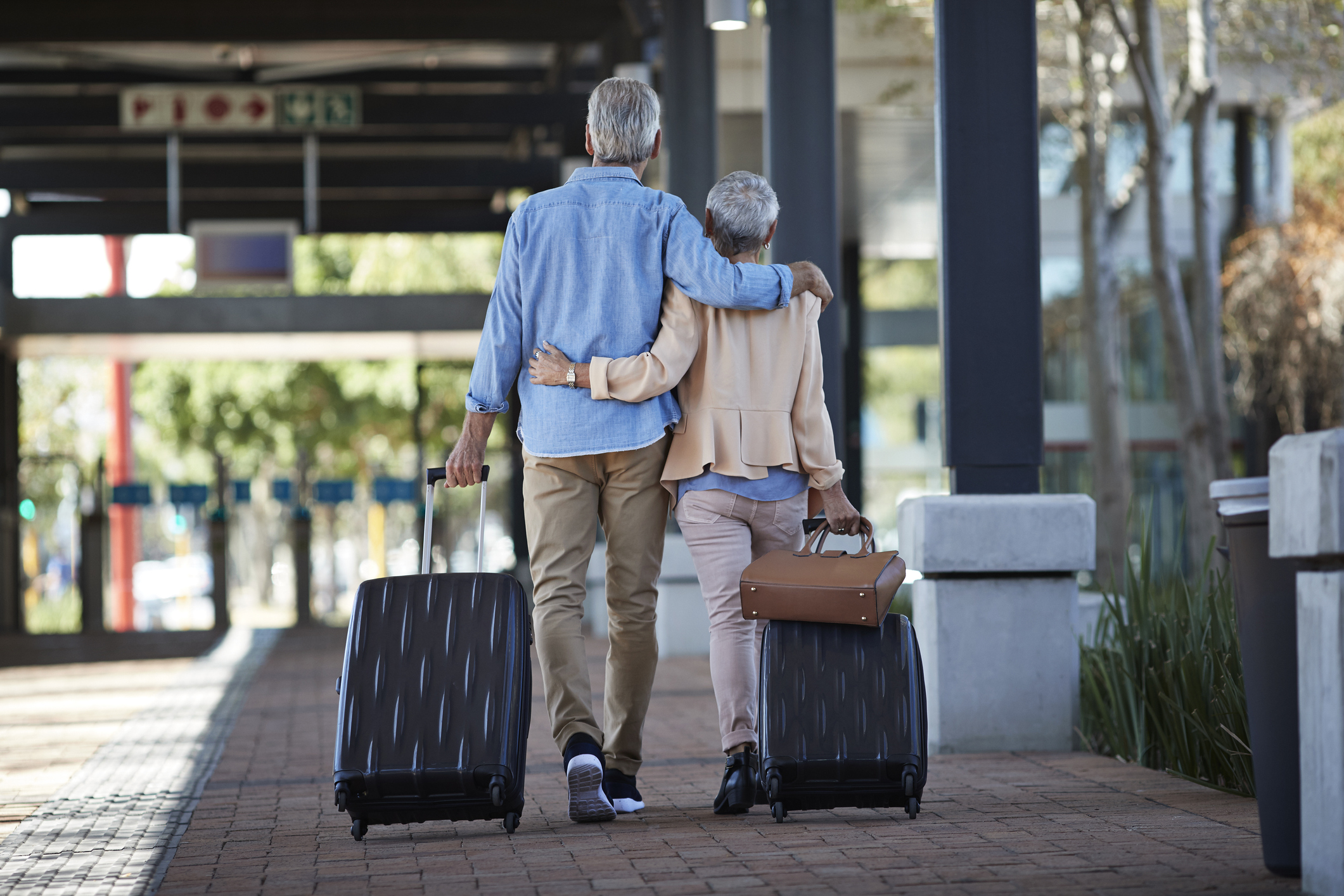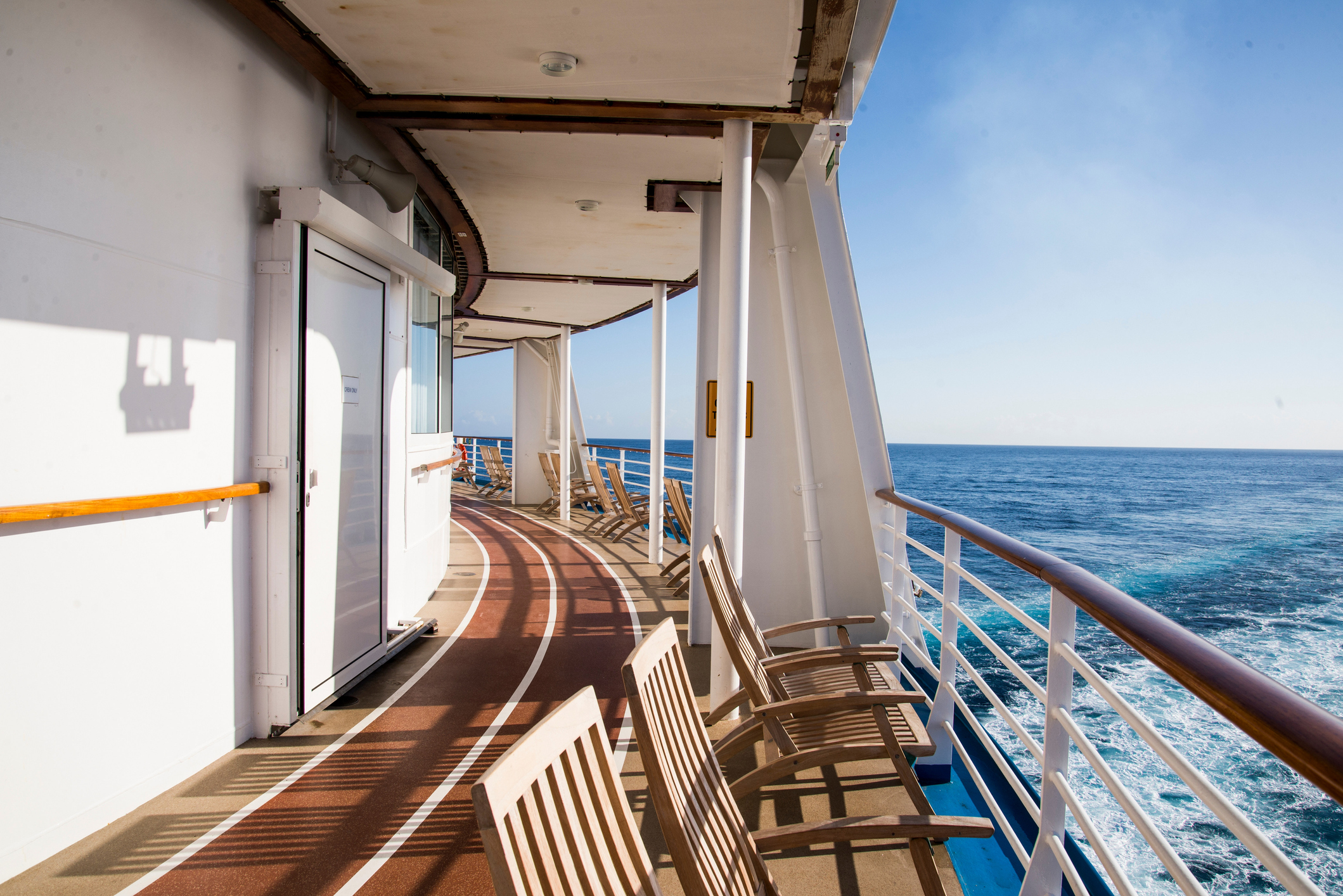How Cruise Ships Are Setting Sail During COVID
Retirees wanting to take a cruise should plan for additional safety measures, such as temperature checks and wearing a mask in public areas.

Nasal swabs, temperature checks, buffet buddies. Welcome to your cruise, ladies and gentlemen. As American cruise lines anticipate opening for business again, they are doing everything they can to reassure prospective passengers that it’s safe to come aboard. It won’t be easy. Coronavirus outbreaks aboard ships last spring imprinted the image of cruises as petri dishes of disease.
The outbreaks prompted the Centers for Disease Control and Prevention to issue a no-sail order last March for ships carrying at least 250 passengers in U.S. waters. On Oct. 31, the order was modified to allow a phased reopening, but many cruise lines continued suspending operations.
“I personally don’t see them starting before spring,” says Sheri Griffiths, owner of CruisetipsTV.com.
From just $107.88 $24.99 for Kiplinger Personal Finance
Become a smarter, better informed investor. Subscribe from just $107.88 $24.99, plus get up to 4 Special Issues

Sign up for Kiplinger’s Free Newsletters
Profit and prosper with the best of expert advice on investing, taxes, retirement, personal finance and more - straight to your e-mail.
Profit and prosper with the best of expert advice - straight to your e-mail.
Still, the cruise lines have been busy. Royal Caribbean Group and Norwegian Cruise Line Holdings consulted medical and scientific experts to develop best practices for safe sailing. U.S. cruise lines are also learning from Asian and European cruises that have already set sail, and the CDC issued its own protocols.
The cruise industry hasn’t said whether it will require passengers to get the vaccine once it becomes widely available, but some cruise lines are considering it. The chief executive officer of Norwegian Cruise Line Holdings, Frank Del Rio, told Travel Weekly that his company’s lawyers are reviewing the legalities associated with a vaccine mandate for passengers. The vaccine, he says, will be required for the crew.
Expect the Cruise Experience to be Different
Gene Sloan, the cruise and travel writer for The Points Guy website, sailed on the SeaDream 1, which, in November, became the first Caribbean cruise to sail since the pandemic hit. SeaDream 1 holds 112 passengers and was sailing at about half capacity for a seven-day trip. Sloan, who wrote about his experience on The Points Guy website, says he had to take a COVID-19 test within three days of sailing and then again on the day of departure. His temperature also was taken, and his hands, shoes and hand luggage were sprayed with sanitizer.
Nothing was particularly invasive or annoying, he says, and once on board no one was required to wear masks, a decision that was partially reversed a few days later. But the social distancing was a big change. Cruising is “a very social experience,” Sloan says. “People like it because they can meet other people. I had to sit at a little table by myself.”
In the bar, every other barstool was taped off. He had to make an appointment for the gym and was limited to a 30-minute workout with three other people in the room. After every half-hour workout, the gym was shut down and sanitized. All meals were outdoors except the first night before sailing. Despite the precautions, three days into the cruise, seven people tested positive—mostly from one family—and passengers “were immediately told to go back to their cabins to isolate,” Sloan says. The ship then sailed to Barbados.
From Wednesday to Saturday, Sloan was quarantined in his cabin, as the Barbados government began contact tracing. Crew members slipped menus under his door; he filled them out and slipped them back. The crew delivered his meal tray, placed it in front of the door, knocked and then stepped away.
It is believed someone unknowingly carried a low level of the virus not picked up by the testing, Sloan says. The Sea Dream Yacht Club, which owns the ship, did not return requests for comments. “There’s going to be a lot of learning from this one,” Sloan says. “Two rounds of testing and someone slipped through.”
Safety Measures for Dining and Excursions
Many cruises have been taking place without problems. Some Genting cruises have been sailing since July 26 in Taiwan. Another started on Nov. 6, with no cases of COVID-19 reported so far, says Kent Zhu, president of Genting Cruise Lines.
Morgan O’Brien, a travel video blogger based in Hamburg, Germany, has taken three cruises: two on a German cruise line through northern Europe in June and one on an Italian ship around the Mediterranean in October. Some safety measures made for a better trip, he says. Because boarding times were strictly enforced, “it’s never been easier to board. I’ve sometimes waited an hour and a half to embark.”
O’Brien, who loves buffets, was happy to see they hadn’t been abolished, although the food was dished out by a waiter, which he termed “a buffet buddy.”
He joined an excursion on the Mediterranean cruise, noting that “it was supervised like in high school. Everyone had to wear a bright-colored vest, and we had to stick with the group. You couldn’t interact with locals or do any extra shopping.”
Perhaps O’Brien isn’t a typical cruiser, but he liked the social distancing. “I hate being put with different parties,” though he acknowledges, “if you’re a social butterfly who after every cruise has 10 new pen pals, that’s not going to happen now.”
He was also pleasantly surprised at how compliant almost all the guests were, and when someone wasn’t, how rapidly the crew responded. “I forgot to put my mask on when walking, and I was very quickly and firmly told, ‘Don’t forget to wear a mask.’”
For those who are keen to go back but worry cruises won’t be the same, O’Brien, himself an avid cruiser, says go for it. “It’s way more like a cruise, than not like a cruise.”
The New Normal for Setting Sail
While the coronavirus remains a threat, this is what cruise ship passengers can expect:
- Required testing for COVID-19 from a few days to 24 hours before you board.
- A health screening, including temperature-taking at the terminal and perhaps daily checks while aboard.
- Mandatory wearing of face masks in public areas, with some exceptions, such as for dining.
- Fewer passengers and crew, with some cruises at 50% capacity.
- No more dining with strangers, and no self-serve buffets.
- No port stops except in isolated areas or when group excursions can be closely monitored. No wandering off on your own.
- Better ventilation systems that limit or eliminate recirculating air.
Profit and prosper with the best of Kiplinger's advice on investing, taxes, retirement, personal finance and much more. Delivered daily. Enter your email in the box and click Sign Me Up.
Alina Tugend is a long-time journalist who has worked in Southern California, Rhode Island, Washington, D.C., London and New York. From 2005 to 2015, she wrote the biweekly Shortcuts column for The New York Times business section, which received the Best in Business Award for personal finance by the Society of American Business Editors and Writers. Her work has appeared in numerous publications, including The Times, The Atlantic, O, the Oprah Magazine, Family Circle and Inc. magazine. In 2011, Riverhead published Tugend's first book, Better by Mistake: The Unexpected Benefits of Being Wrong.
-
 23 Last-Minute Gifts That Still Arrive Before Christmas
23 Last-Minute Gifts That Still Arrive Before ChristmasScrambling to cross those last few names off your list? Here are 23 last-minute gifts that you can still get in time for Christmas.
-
 The Rule of Compounding: Why Time Is an Investor's Best Friend
The Rule of Compounding: Why Time Is an Investor's Best FriendDescribed as both a "miracle" and a "wonder," compound interest is simply a function of time.
-
 4 Great Tools to DIY Your Own Financial Plan
4 Great Tools to DIY Your Own Financial PlanSmart Savings Several tools picked out by Kiplinger that DIYers can use to make their own financial plan.
-
 Why It's Worth Booking a Winter Vacation
Why It's Worth Booking a Winter VacationTravel Smart In the early months of the year, travel demand dips — and so do prices.
-
 5 Ways to Save on a Trip to the 2026 Olympics in Italy
5 Ways to Save on a Trip to the 2026 Olympics in ItalyA guide to going to the Milan-Cortina 2026 Winter Olympics without breaking the bank.
-
 The Best (and Worst) Airlines for Flight Delays and Cancellations
The Best (and Worst) Airlines for Flight Delays and CancellationsWhich airlines should you book and which should you avoid if you want to make it to your destination on time?
-
 Four Luxury Spa Resorts for Well-Heeled Travelers
Four Luxury Spa Resorts for Well-Heeled TravelersWe hand-picked these U.S. luxury spa resorts for their serenity, amenities and dedication to the comfort of older travelers.
-
 Child-Free Cruises Perfect For Your Retirement Celebration
Child-Free Cruises Perfect For Your Retirement CelebrationHow to find a bespoke ocean or river vacation for adults. Many of these options are smaller, charming river cruises, expeditions, or niche experiences.
-
 Noctourism: The New Travel Trend For Your Next Trip
Noctourism: The New Travel Trend For Your Next Trip"Noctourism" is a new trend of building travel and vacations around events and plans that take place at night. Take a look at some inspiring noctourism ideas.
-
 My Husband and I Retired at 67 With $3.2 Million, But He's Frugal About Travel. How Can I Convince Him to Loosen Up?
My Husband and I Retired at 67 With $3.2 Million, But He's Frugal About Travel. How Can I Convince Him to Loosen Up?We asked financial planning experts for advice.
-
 Cruise Lines Sue to Block Hawaii’s New Climate Tourism Tax
Cruise Lines Sue to Block Hawaii’s New Climate Tourism TaxState Tax Your vacation to the Aloha State could come at a higher price tag next year. Here’s why.